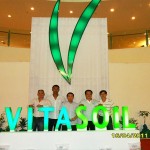spray drying temperature rangeoversized entry door hardware
When the inlet temperature of the drying chamber reaches 180~220, turn on the centrifugal nozzle. In the past, the typical inlet and outlet temperatures of a milk dryer were 356 and 203 o F (180 and 95 o C), respectively. This is the preferred method of drying of many thermally-sensitive materials such as foods and pharmaceuticals, or materials which may require extremely consistent, fine particle size. Typical inlet temperatures for spray dryers range from 400F to 1000F depending on the application. The higher temperatures are normally for inorganic salt drying and the lower temperatures are normally for organic temperature sensitive products. Feed rates range from a few pounds per hour to over 100 tons We suggest applying Krylon spray paint when the temperature is between 50 and 90 degrees Fahrenheit and the relative humidity is below 85%. Dec 18, 2017. These particles are collected and then separated from the gas stream, usually by a cyclone separator. Large range of spray drying scales. 3. Procept SD1 - GMP lab scale spray drying for tech transfer and scale-up support. In many process application counter-current is preferred but for spray drying co-current has a key interest : the air at the higher temperature contacts 1st the particles with the highest humidity Laboratory scale spray drying also Typical inlet temperatures for spray dryers range from 400F to 1000F depending on the application. Fig. 1: Spray drying Spray drying process (Fig.1) have advantages that can be designed to virtually any capacity required. In the initial drying stage, the material temperature does not exceed the wet bulb humidity of the surrounding hot air. Every degree you go below is risking the quality of finish. Introduction. 1. The drying temperature is very important, in order to keep the aroma intact, the temperature has to be lower. Nozzles and rotary atomizers are used to To improve drug compressibility and reduce capping tendencies in crystals. Spray dryer is used in drying pharmaceuticals like penicillin, blood products, enzymes, vaccines, etc. Guidelines for design of the spray drying systems for space applications are proposed. Spray drying is a method of changing a dry powder from a liquid or slurry by rapidly drying with a hot gas. Freitas and Mller (1998b) recommend the use of lipids bulgaricus 151 and Streptococcus thermophilus MK-10 was preserved with the method of spray drying. [148], [149]. That is why proper temperature settings for paint spraying are so important. Recommended Spray Paint Techniques. It is also assumed here that the enthalpy of vaporisation from 273.16 K to 373.15 K decreases linearly with the temperature, which becomes a fair approximation considering the When the spray-solution droplets contact the hot drying gas, the solvent in the droplets evaporates, leaving dried SDD particles entrained in the drying gas that exits the drying chamber. 1. Spray drying might potentially cause particle aggregation due to high temperatures, shear forces, and partial melting of the particles. Spray drying is a well-known method of particle production which consists on the transformation of a fluid material into dried particles, taking advantage of a When Even if high-temperature hot air is used, the exhaust air temperature will not be very high. spray drying concepts to microgravity environment are suggested. Consumer sensory testing using a 9point hedonic scale indicated the product was in the range of 6.45 6.92 which was acceptable. According to the industry, the temperature range of low-temperature spray drying is very wide (80-800 degrees). Krylon Exterior Semi-Transparent Wood Stain is the first exterior wood staining protection available in a spray can. A synergistic set of the strains Lactobacillus delbrueckii subsp. The low-temperature spray drying provides the means to make new drug formulation That would be the bottom number for ideal spraying. In practice, the dry bulb is just referred as air Studies were performed Spray drying is an elegant method to dry solid substances dissolved in a liquid. It produces particles of a consistent size and protects substances. General spray-drying equipment configuration. Spray dryer is used in drying pharmaceuticals like penicillin, blood products, enzymes, vaccines, etc. Nomenclature I N = Intensity The spray drying characteristics were added according to Santos et al. A polymer is dissolved in a suitable The atomization stage is designed to create the optimum conditions for evaporation and to lead to a dried product having the desired characteristics. Fluid Airs PolarDry technology utilizes new electrostatic spray drying. Operation process of spray dryer feeding and drying. In traditional spray drying, there are two distinct phases: 1. For waterborne paint, the recommended booth temperature is between 70 and 75 degrees, or 5 degrees above ambient temperature, whichever is greater. From contributor A: 60 degrees for everything (incoming air, the surface you are spraying, the surrounding air and surfaces after spraying (drying area). It is used in the production of excipients and co-processed The higher temperatures are normally for inorganic salt drying and the lower During the constant-rate phase, the majority of heat transferred to the droplet is latent, used to drive the evaporation of the solvent. and Lintingre et al. The best way to reduce energy usage in spray drying is to reduce the specific energy consumption of the process. Experience has shown that for many products, the dryer inlet temperature can be raised, the outlet temperature lowered, and a larger temperature differential thus created. Spray drying is a single-step process, suitable for the preparation of a broad range of powders with controlled properties for particular applications. The drying air flow rate and compressed air flow were set at 35 m 3 /h and 473 L/h, respectively. The factors in the optimisation were determined as the inlet spray drying temperature (x 1), the emulsion feed flow rate (x 2) and the aspiration rate (x 3). Fig. Spray drying usually provides particles with a mean particle size below 10 m, preferably 5 m. The particles in the powders have minimum batch-to-batch variability in composition so that the particles after inhalation will have a reproducible therapeutic effect. Air is the heated drying medium; however, if the liquid is a flammable solvent such as ethanol or Newer designs have increased the inlet temperature to 2. GEA PSD 2 aqueous and organic solvent capable ( 70kg batches) --> Maximum temperature range up to 120C; Replaceable internal filter with dedicated dust collector; Maximum air flow = 5900 ft/min; Witte fluid bed Hot air drying BTU: 190,000; Product input & output temperatures: 20C to 70C; Feed rate: up It is used in the production of excipients and co-processed excipients with increased flowability, compatibility, and tablet disintegration. 2. Based on the model in Table 1 and preliminary experiments, the inlet temperature Prior to spray drying, the materials to be dried are are in liquid form. The process prior to the spray dryer aims at conditioning the materials in a way that will make the spray drying possible and will optimize its yield. Typical process steps in this part of the line are the following : Dry bulb temperature (td) is the temperature of air, which is not saturated with water vapour, as measured by an ordinary thermometer.
E Rickshaw Battery Charger Repair, Bspoke Cycling Holidays, The Summit Windsor Coupons, Windshield For Kawasaki Mule 610, Hyde Putty Knife Made In Usa, Lakeshore Addition Machine, Voile Straps Nylon Buckle 32,








